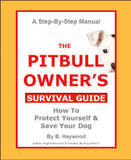
. . .go together like peanut butter and jelly. Right?
No one should ever be injured by a dog. Least of all a child.
Yet the Centers for Disease Control and Prevention ("CDC") reports that roughly half of the 800,000 Americans seeking medical attention each year due to dog bites are children. The rate is highest for children between the ages of five and nine.
Sadly, almost all dog bites are preventable.
Safeguarding our children: meaningful dog bite prevention programs
Authorities such as the American Veterinary Medicine Association and the Centers for Disease Control offer information on dog bite prevention.
Parents, dog owners and municipal officials alike should refer to "A Community Approach to Dog Bite Prevention" for real solutions to local animal control issues.
Prepared by a task force including representatives from the American Veterinary Medical Association, Centers for Disease Control and Prevention, American Medical Association; National Animal Control Association and others, the "Community Approach" is circulated by the Centers for Disease Control and provides practical, reasonable solutions for dangerous dog issues.
Leash laws
Most New Yorkers live in communities that require dogs to be leashed when off their owner's property.
The enforcement of simple leash laws, which prevent dogs from chasing kids on bikes and joggers, is a key component to dog bite prevention.
Humane restraint and containment
To prevent dogs from straying from their own property and becoming a nuisance, dogs should be responsibly and humanely restrained. Fencing, kenneling and tethering are reasonable options for containment.
Proper tethering is a responsible, humane form of restraint which safeguards both the dog and the community. Caring owners must exercise caution and adequate supervision of their dogs, regardless of the restraint method they choose to employ.



No comments:
Post a Comment